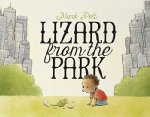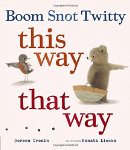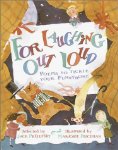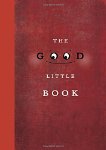Creating inventions that solve problems or meet a need is something we humans are good at doing. We have invented machines that transport us over long distances, that allow us to communicate over long distances, that heal our bodies when they are sick or damaged, and so much more. But what about those small problems that drive us crazy almost on a daily basis? Often we do not address these issues, and year after tear people still spend time trying to find missing shoes, and still spend hours trying to keep their gardens free of leaves.
In today's poetry title you will see how some people have chosen to take on these challenging problems, with excellent results.
Here’s what you do when you can’t find your shoe
In today's poetry title you will see how some people have chosen to take on these challenging problems, with excellent results.
Here’s what you do when you can’t find your shoe
Illustrated by Alan Snow
Poetry Picture Book
For ages 6 to 8
Simon and Schuster, 2003, 978-0689830679
Every day we are confronted with problems that are
infuriating and that take time to resolve. For example, many people lose one of
their shoes when they are in a rush to get out of the house, which just happens
to be the most inconvenient time to lose a shoe. They spend ages searching the
house for that one, irritating, maddening shoe. Then there is the problem that
afflicts children all over the world: Their parents insist on buying vegetables
at the grocery store. Can nothing be done to stop this horrible behavior?
Other people
have problems that are associated with the work that they do. For example, zoo
keepers have a unique problem. They love the animals in their care but no
matter what they do the animals tend to create a stink. People won’t come and
visit the zoo if “the caribou cage has a stench.”
Luckily for
people with lost shoes, too many veggies, and smelly zoo enclosures there are
inventors out there who create devices (or provide services) that take care of
these and many other problems. If you are afflicted with lostshoeitis, then all
you need is a Sure-footed Shoe Finder and all your problems go away. All you
have to do it to place “the shoe that is missing its mate” in the device and it
will set off “on its shoe-finding search” on your behalf. Using its Foot-Odor-Sensitive
Vent it seeks out the missing shoe.
To get rid of
unwanted veggies in your family grocery cart all you need to do is to spray it
with Veggie Be Gone, a “produce repellent you simply spray on.” What could be
easier! Once a cart is sprayed with this ingenious stuff any vegetable that is
dropped into the cart will “bounce right back out.”
Zookeepers need
not despair about the niff, pong, or stench that comes from their animal’s
enclosures. All they need to do is to ring the Stink Stoppers, a tireless team
of specialists who will fight all bad smells “until all are ex-stinked.” Armed
with cleaning equipment galore they get to work. They “wipe down each walrus
again and again,” and will “brush tiger teeth” and “trim hippo nails.” These
fearless cleaners will have any zoo smelling sweet and clean in no time at all.
Children and
adults alike are going to laugh out loud as they read the poems in this
delightful book. Comical inventions solve twelve problems that readers will
immediately identify with. Yes, wouldn’t it be great if we all had a Crumbunny
to eat the crumbs that we leave in, around, and under our beds. And yes, of
course we would love to have a machine that could really suck up all the fallen
leaves in our yard every autumn.
With wonderfully
funny rhyming verse and amusing illustrations, this is a book that will appeal
to readers of all ages.




























